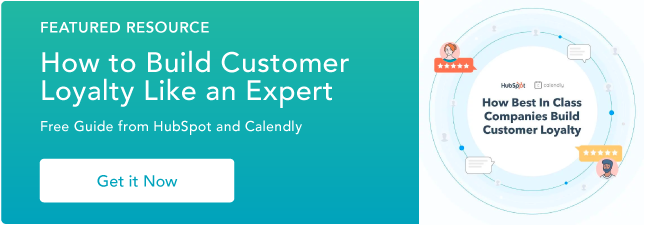When I first started learning Spanish on Duolingo, I had a casual interest in picking up a new language. But soon, Duolingo’s robust customer loyalty program gripped me like a vise. The app’s clever use of gamification—the points, leaderboards, and friendly competition kept me coming back every single day. Before I knew it, I had hit a 365-day streak!

Every day, as I watched my points increase and my rank climb, it wasn’t just about learning anymore; it was about maintaining that streak and proving to myself that I could stick with it. That little bit of extra motivation made all the difference, turning a casual learning experience into a daily habit I looked forward to.
On Duolingo’s part, they had a loyal customer who’d gotten product adoption down to a tee. Such is the power of customer loyalty programs. In this article, I’ll show you how to create a customer loyalty program that not only attracts new customers but reinforces the positive perceptions of existing ones.
Tables of Contents
- What is a customer loyalty program?
- Benefits of a Customer Loyalty Program
- Loyalty Program Best Practices
- How to Create a Customer Loyalty Program
- Customer Loyalty Programs for Small Businesses
- Customer Loyalty Software
What is a customer loyalty program?
A customer loyalty program is a program your business offers that rewards customers for their continuous purchases from you.
Rewards can be free products, early and exclusive access to new products or events, point systems, awards, exclusive merch — anything you want to do to share your appreciation with them for their business.
.png)
Free Customer Service Metrics Calculator
Calculate your business's key metrics and KPIs for customer support, service, and success with this free template.
- Customer Acquisition Cost
- Customer Lifetime Value
- Customer Satisfaction Score
- And More!
Download Free
All fields are required.
.png)
According to Merkle’s 2024 Loyal Barometer Report, 77% of consumers belong to up to five customer loyalty programs, and 93% say they earned or redeemed a reward in the past six months. Customers who join these programs tend to spend more money because they receive benefits for their business. They already enjoy buying from your company, so why not give them another reason to do so?
An easy retort to that question would be that it costs too much to offer incentives without getting anything directly in return. This does appear to be true when you look at an individual purchase. However, loyalty programs benefit your business in ways that extend beyond just one or two transactions.
If you question whether they're cost-effective, keep reading to learn some of the key benefits that customer loyalty programs can provide to your business.
What are the benefits of a customer loyalty program?
All businesses can benefit from building a customer loyalty program and rewarding customers with additional, exclusive benefits. You might already be a member of some programs, like a frequent flier miles program or a referral bonus program.
In an increasingly competitive and crowded market, loyalty programs can differentiate you from your competitors and keep your customers around. I’m way more likely to shop at a store or visit a restaurant again if I know I’m getting a deal.
While loyal customers are more likely to make repeat purchases, that’s not the only reason to start a program. Below I’ll go over the benefits of a customer loyalty program for your business.
1. Better Customer Retention
Nowadays, customers are making purchase decisions based on more than just price. They make buying decisions based on shared values, engagement, and emotional connections with a brand. Merkle’s 2024 report shows that a solid customer loyalty program has an 84% impact on a consumer’s decision to keep doing business with a brand.
Customer loyalty programs are a great way to engage customers beyond just the point of purchase, to interface on shared values, and to provide even more value to customers — making them happier and more likely to keep purchasing from you.
You can also work with customers for recurring exchanges. For example, with home service companies, you could create a maintenance plan with homeowners where you come back on a weekly or monthly plan. This keeps the customer engaged and enrolled repetitively.
2. More Customer Referrals
If your customers enjoy the benefits of your customer loyalty program, they’ll tell their friends and family about it. This word-of-mouth marketing draws in new customers at no acquisition cost and can generate even more revenue for your business.
In fact, word-of-mouth marketing drives $6 trillion of annual consumer spending and is responsible for 13% of all sales. 77% of consumers are more likely to purchase a new product if their friends or family urge it.
Here’s a real-world example. When the McDonald’s app first came out, I saw that they had a special $1 deal on fries. I told my friends, who also downloaded the app, and we all became frequent users.
3. Cost-Efficacy
Running a customer loyalty program is often far more cost-effective than the continual acquisition of new customers. Loyalty programs, by encouraging repeat business, increase the lifetime value of current customers, which is much cheaper than funneling extensive resources into acquisition strategies.
Not only does this promote brand loyalty but also turns satisfied customers into brand advocates — individuals who are likely to bring in new customers through positive word-of-mouth, which further reduces the need for costly marketing campaigns.
4. User-Generated Content and Reviews
Online customer reviews are almost as trustworthy as recommendations from friends and family. Customer loyalty programs that incentivize reviews and ratings on websites and social media will result in authentic user-generated content from customers singing your praises so you don't have to.
Loyalty Program Best Practices
- Adopt a multi-channel customer service system.
- Provide exceptional service.
- Be consistent.
- Focus on the customer, not the competition.
- Build credibility through customer interactions.
- Deliver added value.
- Share positive customer experiences.
- Reward customer loyalty.
Customers are driven by their goals, and they’ll be loyal to the company that helps them achieve them. Even if they have a positive history with your brand, a competitor with a better offer can still win them over. Because of this, customer loyalty isn’t earned easily or even guaranteed — the steps below will help you build a following of loyal customers.
1. Adopt a multi-channel customer service system.
Building customer loyalty begins with being in tune with your customers’ needs. A multi-channel service system is one of the best ways to connect with your customers, especially when they need help.
Customers will have more access to your service team, creating more customer interactions, and the more you interact with them, the more often you can influence their experience.
Multiple channels also allow you to offer an omnichannel experience, where customers have a consistent experience across channels, platforms, and devices. This increases customer satisfaction as your customer service is more accessible, which is exactly what you want for frustrated customers who need support.
Pro tip: Consider adopting help desk and live chat tools to help your customer service team cover multiple channels. For smaller teams, AI software like chatbots can relieve the workload of organizing and distributing incoming requests without having to hire more employees.
2. Provide exceptional customer service.
Going above and beyond customer expectations to provide exceptional service doesn‘t mean giving away free products, discounts, and perks. It’s quite the opposite. Customers want solutions to their problems, not a free sample. Giveaways and discounts simply put a bandage on the problem.
Instead, challenge your team to listen to what the customer is saying and process the feedback. More often than not, your customer will be happier with the solution than they would be with a replacement or perk — although those can help sweeten the deal.
Pro tip: Use tools like SurveyMonkey or Zendesk to gather and analyze customer insights actively. Use this feedback to tailor your offers to meet customer needs more effectively.
3. Focus on the customer, not the competition.
There‘s a time and place to scope out competitors, but it’s not as beneficial as you might think, as mirroring them to win over their customers doesn’t guarantee the same results. To be the best in the eyes of your customers, you'll need to know what your competitors do, then get even more creative than they are.
Big gains in customer loyalty are the sum of several small decisions. What that means is this: Your success isn't riding on one breakthrough. Every customer interaction, product purchase, and referral by a devout customer contributes to brand loyalty every day.
So when you‘re tempted to see if the grass is greener on the other side, know it’s probably watered with a different sprinkler.
Pro tip: Leverage tools like Google Analytics and social listening platforms like Brand24 to gain insights into what your customers value most. Use this data to innovate beyond the competition by introducing features, services, or products that are uniquely tailored to your customers’ desires.
.png)
Free Customer Service Metrics Calculator
Calculate your business's key metrics and KPIs for customer support, service, and success with this free template.
- Customer Acquisition Cost
- Customer Lifetime Value
- Customer Satisfaction Score
- And More!
Download Free
All fields are required.
.png)
4. Be consistent.
Franchises like McDonald‘s are so successful mainly because of consistency. Customers know what they can expect from these businesses when they go, no matter where they are in the world. On the surface, that doesn’t seem like a contributing factor toward customer loyalty, but it is — here's why.
When brands provide consistency through their products and services, their customers can easily incorporate them into their lives.
For instance, when I want ice cream, all I can think about is my favorite cone from McDonald’s. I can count on them to be open and deliver exactly what I had in mind.
Pro tip: Establish clear and standardized processes across all your customer touchpoints to ensure there’s consistency in service and product quality. Train your staff on these standards and monitor compliance through periodic reviews and customer feedback.
If you sell physical products, consider implementing a mystery shopper program to objectively assess and ensure that customer experience remains consistent.
5. Build credibility through meaningful customer interactions.
When a company achieves a 7% increase in brand loyalty, the customer lifetime value of each client can rise by 85%. If the company doesn’t prioritize building customer loyalty, there’s a good chance their churn rates will be through the roof.
Every business makes mistakes, but the key to retaining customers is acknowledging mistakes and correcting them when they happen.
Loyal customers expect a positive experience from your brand every time they interact with it. They want to feel like you value them as much — if not more — than they value you. If they sense their business isn't appreciated, you might lose them to competitors.
A CRM can come in handy here as it records the past experiences that a customer has with your brand. It stores messages like emails and calls, as well as customized notes that relay specific information about a customer. This creates a more personalized experience as employees can leverage important historical data regarding past interactions with a customer.
Pro tip: Regularly update your CRM with detailed customer interaction logs and personalized notes. Train your team to use this information to tailor their communication, acknowledging past interactions and customer preferences.
You can also implement a customer appreciation program that rewards not only purchases but also engagement with your brand, such as providing feedback or participating in community events. This helps customers feel valued and reinforces their loyalty.
6. Deliver added value.
You‘re not the only one vying for your customers’ attention — your competitors are too. Everyone races to show their customers that they can best fulfill their needs. So, how do you edge them out? Go above and beyond their expectations.
Other than offering a loyalty program, you can do this by building a relationship with your customers that extends beyond the moment of purchase to demonstrate that you’re invested in their lifestyle, not just their money.
One way that your company can add value to the customer experience is to host events or contests that your target audience would be interested in. For example, the energy drink brand Red Bull has built a massive customer following by sponsoring extreme sporting events and teams.
Another way to add value is to create a customer community. This could be something simple like a knowledge base or ideas forum, or it could be complex and include a devout network of loyal advocates.
Take Harley Davidson, for example. It founded a community of brand evangelists who advocate for Harley Davidson at different dealerships throughout the U.S. These communities make customers feel like they're part of an in-crowd with a social status exclusive to the group members.
Pro tip: Develop unique community engagement initiatives (niche events, contests, workshops, etc.) that align with your brand identity and resonate with your target audience, like Red Bull’s sponsorship of extreme sports. You can also cultivate a brand community through online forums, clubs, or ambassador programs, which create a sense of belonging and loyalty among customers.
7. Share positive customer experiences.
If you're doing a good job generating positive customer experiences, why not let people know? Gather customer feedback and share reviews to inform others about the benefits your company brings and broadcast these stories across your different channels.
Customers tend to trust other customers more than your advertising, so it's important to leverage positive interactions to maximize customer value.
If you’re unsure where to find feedback, third-party review sites like Yelp give you access to a lot of customer feedback in one place. You could also consider adopting NPS® and other feedback tools to gather qualitative information about your brand or encourage customers to share testimonials that you can share on your site.
User-generated content (UGC) is another way to share your customer wins. If I’m looking to add a new eye shadow palette to my collection, a video where a trusted influencer (Lauren Mae Beauty is one of my favorites) uses the product can inspire me to buy it. If I saw a brand promoting her recommendation, I’d likely reach for my wallet.
Pro tip: Create case studies or feature stories from particularly compelling customer experiences to further humanize your brand and increase credibility.
8. Reward your customers.
Customers loyal to your brand are also the most valuable to your business. These customers spend more with your business and should be rewarded for it — this is where a loyalty program becomes essential to building customer loyalty.
Pro tip: Design a tiered loyalty program that rewards customers progressively based on their engagement and purchasing frequency. These rewards can include exclusive discounts, early access to new products, special event invitations, and personalized offers.
So, now that you know some customer loyalty best practices, how do you start a customer loyalty program? Here’s how.
How to Create a Customer Loyalty Program
- Choose a great name.
- Create deeper meaning.
- Reward a variety of customer actions.
- Offer a variety of rewards.
- Make your 'points' valuable.
- Structure non-monetary rewards around your customers' values.
- Provide multiple opportunities for customers to enroll.
- Explore partnerships to provide even more compelling offers.
- Make it a game.
1. Choose a great name.
The first step to a successful customer loyalty program is choosing a great name. It should incite curiosity and interest and urge customers to participate. Most importantly, you must distinguish it from the myriad of other loyalty programs they might already be part of.
The name should go beyond explaining that the customer will get a discount or will get rewards — it needs to make customers feel excited to be a part of it.
Some of my favorite customer loyalty program names include beauty brand Sephora's Beauty INSIDER program and vegan supplement brand Vega's Rad(ish) Rewards. These clever, unique names hint at benefits but don't give them away — making customers curious to learn more and join.
2. Create a deeper meaning.
Some customers are cynical about customer loyalty programs and think they're just a clever ploy to get them to spend more with businesses. Even if that’s one of your goals, it should be about more than just the money.
To get customers excited, tap into the “why” behind your product or service to make your customer loyalty program as compelling as possible.
Briogeo is a customizable hair care product line. With just a few answers to a quiz, customers will have a shampoo and conditioner crafted just for their hair on their doorstep.
Its rewards program is just as customer-centric as its product. For every $1 customers spend, they earn three points toward a savings discount on their next purchase. With no frills or distractions, customers know that this loyalty program is getting them closer to even more affordable hair care products. It's a win-win.
Pro tip: Create a loyalty program that aligns with your brand’s core values and communicates a clear, beneficial mission to your customers.
For example, if sustainability is a key part of your brand ethos, offer rewards for actions that support environmental initiatives. That could include discounts for recycling packaging or points for purchasing eco-friendly products. This motivates purchases and connects emotionally with customers who share the same values.
3. Reward a variety of customer actions.
Another way to demonstrate your commitment to customer loyalty beyond just purchases? Reward non-purchasing customer actions.
Customers watching product videos, engaging in your mobile app, sharing social media content, and subscribing to your blog are still valuable signs that a customer is engaging with your brand — so reward them for it.
Pro tip: Use a platform like Bunchball to track and reward actions like watching videos, using your app, or social media sharing. Offer points, badges, or exclusive content as rewards for these activities.
4. Offer a variety of rewards.
Discounts aren't the only way to provide more value to your customers.
Those who spend at a certain threshold or earn enough loyalty points could turn them in for free tickets to events and entertainment, free subscriptions to additional products and services, or even donations in their name to the charity of their choice.
Lyft does a fantastic job of this with its LyftUp program. Riders can round up the cost of their ride to the next dollar and donate the change to the charitable organization of their choice — making it easy and rewarding for them to make an impact while using the service as they normally do.
Pro tip: Diversify your loyalty program’s rewards to cater to different customer preferences and lifestyles. Introduce options like redeeming points for event tickets, subscription services, or making charitable donations. Consider partnering with other companies to broaden the range of rewards, which enhances the perceived value of your loyalty program.
5. Make “points” valuable.
If you’re asking customers to enroll in your customer loyalty program, make it worth their while and offer something valuable in return.
For example, if you're offering cashback rewards as part of your customer loyalty program, assign a monetary value to your points so customers can visualize what they can earn (and spend) by continuing to purchase from you.
Credit cards do an excellent job of this by illuminating dollar-for-dollar how people use points — just watch any commercial offering points in exchange for dollars, airline miles, groceries, or gas.
Pro tip: To clearly communicate the value of each point in your loyalty program, consider creating an intuitive conversion chart or a digital calculator that allows customers to easily convert their earned points into tangible rewards such as cash, merchandise, travel, or gift cards.
6. Structure non-monetary benefits around your customers' values.
Values are important to customers — in fact, a quarter of customers are willing to part ways with (and even boycott) a company that doesn’t align with their values.
So, make sure you tap into those values as part of your rewards program, too.
TOMS Shoes donates a pair of shoes to a child in need for every purchase its customers make. Seeing the impact of supporting this cause, TOMS takes it a step further by launching new products that help other important causes — like animal welfare, maternal health, and clean water access. Customers can get excited about helping in other ways.
Pro tip: Give your customers the option to convert their loyalty points into donations for specific causes or create limited-time promotions that support different initiatives.
Conduct surveys to understand which causes your customers are passionate about and adapt your program accordingly. This increases customer engagement by connecting with their values and boosts your brand’s image as socially responsible.
7. Provide multiple opportunities for customers to enroll.
Once you‘ve launched your customer loyalty program, make sure you’re promoting the benefits of joining. If customers get rewards from purchasing from your online store, next to the price, share the points they could earn from spending that much.
I experience this when flying on Jet Blue, which offers a loyalty rewards credit card. The flight attendants always announce that I could earn 30,000 miles toward my next flight. All I have to do is apply for the airline's credit card.
Other ways to do this include promoting the program on social media channels and adding on-site push notifications when customers complete an activity that earns them points.
Pro tip: You can maximize the visibility and accessibility of your loyalty program by integrating enrollment prompts across all customer touchpoints.
Feature potential points next to product prices on your website, use dynamic notifications during checkout, and employ strategic in-person pitches (similar to airline promotions). You can also implement in-app notifications or quick-response (QR) codes that lead to a loyalty program signup page.
8. Explore partnerships to provide even more compelling offers.
What's better than one reward? Two rewards, of course.
Co-branding rewards programs are a great way to expose your brand to new potential customers and to provide even more value to your existing, loyal ones.
Brands might offer loyal customers free access to co-branded partnerships — like T-Mobile's offer of a Netflix subscription with the purchase of two or more phone lines.
Pro tip: Leverage co-branding partnerships to increase your loyalty program’s appeal and expand your reach. Identify brands that align with your values and target demographics to collaborate on exclusive offers, such as bundled services or joint promotions.
9. Make it a game.
Everyone loves games and competition — so use that winning spirit to get your customers interacting with your brand more frequently. Lots of brands gamify their customer loyalty programs to earn valuable engagements within an app, website, or at point-of-purchase.
Points are easily translatable for gamification. Take Treehouse, which teaches coding and app development. Treehouse rewards engaged users with more and more points leading up to a badge — which users can then display on their websites and social profiles to impress colleagues and potential employers with their skills.
Pro tip: Design a points-and-rewards system that mimics a game, with clear milestones and visual progress indicators like badges or levels. The points can lead to rewards such as exclusive content, status recognitions, or special privileges.
If you're operating with a growing business, you may not have much flexibility when it comes to your budget. However, you can still offer an attractive rewards program that fosters customer loyalty.
.png)
Free Customer Service Metrics Calculator
Calculate your business's key metrics and KPIs for customer support, service, and success with this free template.
- Customer Acquisition Cost
- Customer Lifetime Value
- Customer Satisfaction Score
- And More!
Download Free
All fields are required.
.png)
Customer Loyalty Programs for Small Business
While growing businesses don't have the same financial influence as bigger companies, these organizations can still create incentives that motivate customers to return to their stores. When developing their rewards program, small businesses need to be creative and develop a unique system that mutually benefits both the company and the customer.
Take a look at a few common ways that growing companies leverage rewards programs to build customer loyalty.
1. Punch Cards
Punch cards are a common reward program for B2C companies. With it, customers get a business card that gets a hole punched after every purchase. Once customers fill up the card with punches, they receive perks and rewards. The benefit of this system is that customers are guaranteed to return a certain amount of time to receive the reward, making repeat purchases and driving revenue.
Nothing Bundt Cakes has a popular punch card loyalty program that offers customers a free personal cake when they buy 12 of them.
What I like: I like how wonderfully simple and effective punch card programs are at encouraging repeat visits. They create a visual reminder of progress toward a reward, which can be particularly motivating for customers.
2. Opt-in Email
Opt-in email solicits the customer's email address for communication with your brand. Once the customer opts in, your company can email them offers or promotions.
Emails are cheap to compose and distribute and can be sent at almost any frequency. You can also use email automation tools to deliver emails efficiently.
What I like: I like how opt-in email programs provide a direct line of communication with customers, allowing you to share exclusive offers and personalized content with them. This gives them a sense of exclusivity and keeps them engaged.
3. Free Trials
Free trials are typically thought of as incentives used to convert potential leads, but you can also utilize them in rewards programs too. For example, say you have a new product or service that's about to launch. You can release a free trial to members of your loyalty program. This not only acts as a reward for customer loyalty but also works as a marketing tactic that primes your customers for a future sales call.
What I like: Free trials allow prospective customers to experience the value of a product or service firsthand, lowering the barrier to entry. This approach can build trust and increase the likelihood of a prospect becoming a paying customer.
4. Partner Programs
One way to add value is to look externally at businesses to partner with. By combining your resources, you can create an offer that benefits both you, your partner, and your shared customers.
For example, Crosstown Doughnuts, a London-based bakery, partnered with Caravan Coffee to offer a discount on coffee when customers bought doughnuts, and vice versa. This collaboration helped both brands attract a broader customer base interested in quality coffee and gourmet doughnuts.
What I like: Partner programs extend the value of a loyalty program by offering benefits from affiliated businesses. This approach provides customers with a wider range of rewards and strengthens brand partnerships.
5. Referral Programs
Why track down new leads all by yourself when your customers can help do that for you?
You can incentivize loyal customers to become advocates by offering them an attractive reward for customer referrals. If your offer is good enough, customers will be happy to take the time to network your business with other potential leads.
What I like: I love how referral programs leverage word-of-mouth marketing and rewards customers for bringing in new business. In AWeber’s case, customers get up to 50% on their AWeber referrals. So if you’re an AWeber customer and you refer someone to the platform who ends up paying $240/year, you’ll get $120. This format not only helps grow a company’s customer base but also builds a community of brand advocates.
6. Points Systems
Tracking points is a tried and true method of tracking customer loyalty. The two keys to making these programs successful are a worthwhile incentive and a reasonable timeline to earn the incentive.
Point-based loyalty programs find the sweet spot between the two so customers don’t get frustrated. For example, if you sell workout gear, people might make purchases fairly often, and there are many different businesses to choose from.
Your incentive would need to be valuable — like a free t-shirt — and the buyer would need to be able to earn it quickly enough to keep them striving toward it, but not so quickly that the reward loses value.
Assigning a point value per dollar is a smart way to find this balance, but you’ll need to make sure it's fair. If it takes 100 points to earn a free t-shirt that usually costs $20, a $10:100 point ratio may not be feasible for your profit margin, while a $1:1 point ratio might discourage customers before they even sign up.
What I like: I love how points-based loyalty programs offer clear and tangible rewards that motivate customers to make repeat purchases. It's a straightforward system that makes customers feel appreciated with every transaction.
7. Loyalty Discounts
Loyalty discounts come with a bonus to the traditional customer loyalty programs I've covered so far. These types of programs allow you to give back to the customer while also collecting data that can help you personalize their buying experience. Kroger's Community Rewards program is a great example of loyalty discounts in action.
To employ this type of program, you'd offer consistent, predictable discounts to customers every time they display an identification marker that associates them with the program. This might be a QR code, a card, or a phone number.
On the back end, your business captures data about what the customer purchased. Over time, you‘ll understand your customers’ trends, patterns, and habits so you can improve their experience, making them even more brand loyal.
These types of programs are so strong because the incentive is consistent and predictable, which gives the customer a reason to come back again and again.
What I like: I love how loyalty discounts offer immediate savings on purchases. This makes customers feel appreciated, which in turn, can boost repeat purchases and customer retention.
8. VIP Memberships
Similar to the idea of a loyalty program, there’s an added sense of luxury or exclusivity when a business introduces VIP perks.
By introducing a VIP membership program, customers can subscribe to your company’s email or SMS in exchange for better product selection or ease of use. Not only will they be more interested in your new offerings, but they’ll get notifications each time they check their email or phone messages.
What I like: VIP memberships provide upfront value with exclusive perks and discounts, making customers feel valued.
For example, Alamo Drafthouse Cinema offers different pricing tiers that customers can select to be able to see unlimited movies and get discounts at certain locations. This type of loyalty program often results in a stronger commitment to the brand since customers have already invested in the membership.
9. Mission-Driven Programs
Giving back to the community is good for the world and business. A great way to foster customer loyalty is to offer added benefits for shopping with your company — like doing something for the greater good.
Baronfig makes office materials, a broad market to sell in, but has a program dedicated to planting trees for every item sold. Conscious consumers will think highly of your small business and spread the word about these programs because of their selfless nature.
What I like: Consumers like to feel part, if not all, of their money is going to a cause greater than them. I love how mission-driven programs align customer loyalty with a greater cause, creating a deeper emotional connection to the brand. This type of program not only rewards customers but also promotes shared values and social responsibility.
10. Community Programs
Community programs are highly effective for small businesses as they can attract customers in your area or from computer screens.
In the last year, it’s plain to see how a business can impact its audience when it positions itself as a way to connect with others. Some examples are family-owned gyms offering Zoom classes to make customers feel more included or having bakeries pop up in local flea markets. These are all steps small businesses can take to build customer loyalty and social bonding as well.
What I like: In addition to furthering a good cause, customers also want to feel like part of a community filled with like-minded people. Community programs build a sense of belonging among customers by facilitating interactions and connections within a supportive and engaging environment.
Customer Loyalty Software
Xoxoday Plum
Xoxoday Plum is a powerful customer loyalty rewards platform that helps businesses engage and retain their customers through personalized reward programs. With Xoxoday Plum, businesses can easily create and manage reward campaigns that are tailored to their specific customer base, offering rewards that are both meaningful and relevant.
What I love: Customers report that Xoxoday Plum offers support for multiple countries, making it a great fit for a global company. Beyond that, vouchers are easy to redeem, resulting in a seamless customer experience.
Yotpo
Yotpo is an incentive marketing platform that helps you build a custom loyalty program. There are multiple options for you to choose from, including a tier-based program, a point system, or referrals. The goal? To engage your existing customers and reach new ones.
What I love: Yotpo has tools that you can use for UGC management, making it easy to promote the customers who sing your praises.
LoyaltyLion
LoyaltyLion helps you create a loyalty program to help your customers feel valued, as opposed to being another number. You can customize a program based on points, rewards, and tiers that customers can access anywhere along their journey. You can also target customers at risk of churn with offers to re-engage.
What I love: LoyaltyLion makes building a customized program easy, with a powerful analytics dashboard to show your user engagement.
Start Your Customer Loyalty Program Today
To get started with building your customer loyalty program, you have to prioritize the customer experience.
A loyalty program won’t magically solve all your customer‘s issues — it’s simply a more interactive way to say, “Thank you, come again.” Once your customers trust you, they'll be vying for the chance to earn rewards for doing business with your brand.
After all, don’t they deserve the royal treatment for being loyal customers?
Editor's note: This post was originally published in July 2019 and has been updated for comprehensiveness.






![How & Why Loyalty Punch Cards Attract Customers to Your Brand [+ Examples]](https://www.hubspot.com/hubfs/customer-loyalty-punch-card_6.webp)




